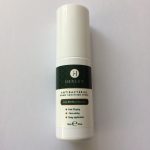Arthritis Fact Sheet
Information Sheet
The word arthritis simply means 'inflammation of the joints' and it tends to be used as an umbrella term used to cover over 200 muscle and joint problems. Arthritis can affect anyone at any age and there are thought to be over nine million people in the UK who suffer with it.
Osteoarthritis is the most common form of arthritis and although it can affect anyone it is more common in older women. In osteoarthritis, the cartilage in a joint becomes weakened and brittle. To compensate for this the bone underneath thickens and broadens out, and the space inside the joint is narrowed, this is often accompanied by pain and inflammation.
Rheumatoid arthritis is another common kind of arthritis and it affects about one in a hundred people in the UK. It is most prevalent between the ages of 30 and 50 and affects more women than men. Rheumatoid arthritis is characterized by inflammation in the thin synovial membrane that lines the joint capsule, the tendon sheaths (tubes in which the tendons move) and the bursae (sacs of fluid that allow the muscles and tendons to move smoothly over each other). The joints and inflamed tissues then become stiff, painful and swollen.
Because there are so many kinds of arthritis treatment can vary massively, but in most cases it is suggested to try and reduce the associated inflammation. Inflammation reduction can be achieved in several ways; with diet, exercises, medicines, and natural remedies all having their benefits.
Emu oil
Emu oil is a 100% natural remedy that has been used in Aboriginal medicine for centuries. The oil has now become famous around the Globe for its powerful soothing properties and its popularity as one of the most effective natural remedies available is growing quickly.
There have been several published studies that have looked at emu oil's ability to reduce inflammation and swelling (1-4) with three of these focussing on arthritis models. The results are very positive with all studies showing an overall significant reduction in swelling on application of emu oil, when compared to controls. Some of the results showed emu oil application being as effective, and in some cases even more so, then commonly prescribed drugs.
A recent study completed at Victoria University, which is awaiting publication, focussed on emu oil use, both its topical application and dietary use. The study involved 120 volunteers in an eight week, double blinded, placebo controlled trial. The trial was split into three groups, a group applying emu oil topically (A), a group ingesting emu oil (B), and a group both applying the oil topically and ingesting it (C).
It was shown that group C showed a significant increase, of approximately 20%, in grip strength tests, when compared to control groups. Pain recordings were measured on a visual analogue scale and all three groups showed significant reductions in their pain scores, with group A seen to have the biggest reduction in pain when compared to the placebo group. Furthermore a perceived pain relief questionnaire was undertaken, with 69% of emu oil users reporting relief through the use of the oil during the trial and with the perception of pain relief from emu oil users being 2.34 times greater than that of those on the placebo.
It is important to note that several of the studies observed that not all emu oil's reduced inflammation to the same degree, with it appearing that the source of the oil affected its reduction strength.
References
1. Lopez A, Sims DE, Ablett RF, Skinner RE, Leger LW, Lariviere CM; Jamieson LA, Martinez BJ, Zawadzka GG Effect of emu oil on auricular inflammation induced with croton oil in mice. Am J Vet Res. Dec;1999;60 (12):1558-1561
2. Whitehouse MW, Turner AG, Davis CKC, Roberts MS Emu Oil(s): A source of non-toxic transdermal anti-inflammatory agents in aboriginal medicine. Inflammopharmacology. March,1998;6(1) 1-8
3. Snowden JM, Whitehouse MW Anti-inflammatory activity of emu oils in rats. Inflammopharmacology-1997;5(2)127-132
4. Snowden JM., O'Malley PJ. Ellis TM Emu Oil It's Anti-Inflammatory Properties. A report for the Rural Industries Research and Development Corporation, October 1999

